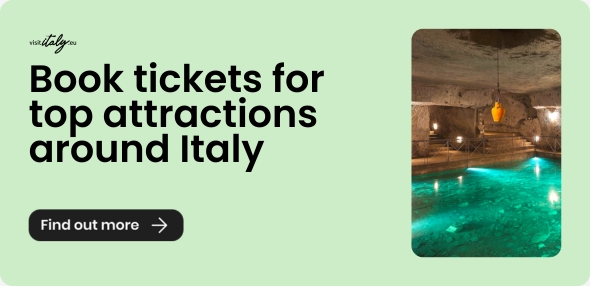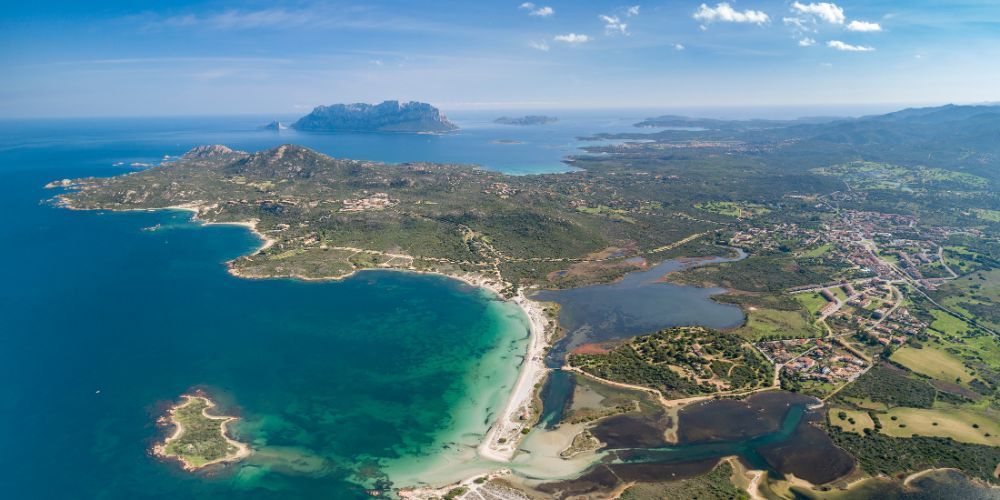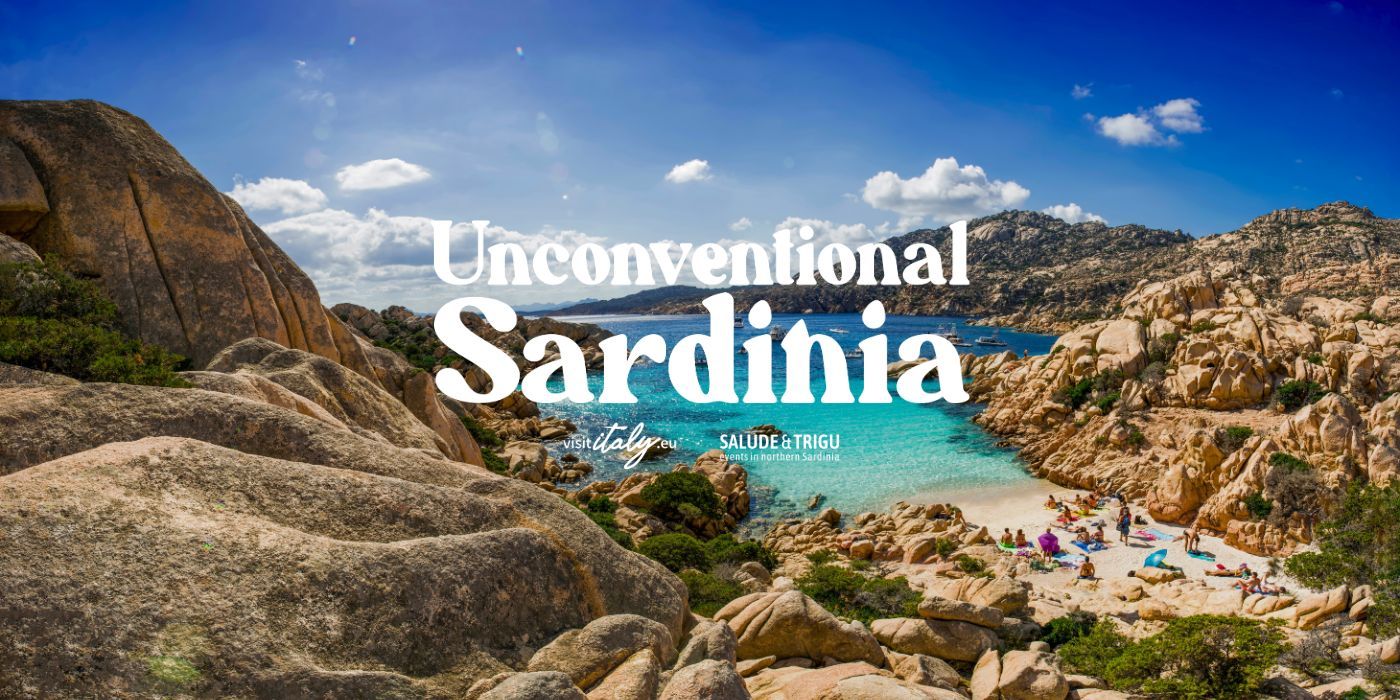The best time to enjoy the scents and breathtaking views of Sardinia?
Before and after the summer, even better if through authentic experiences, provided by the tour operators on site, to visit and appreciate an unusual Sardinia out of season.
Far from the tourist routes and the main attractions, you can immerse yourself in the silence of the nature, among the centuries-old olive trees and junipers climbing over the sea.
So prepare comfortable clothing, phone portable charger, water and suitable shoes: 2026 is the perfect year to explore 5 options of slow travel in Sardinia, through the scents of the Mediterranean scrub and unforgettable views!

Slow travel in Sardinia to discover the most authentic island
🥇 Visit Italy’s brand partnership

In 2026, the debate on environmental impact and overtourism is more relevant than ever: social media and low-cost flights continue to drive intense tourist flows toward iconic destinations, but not all of them – such as Sardinia – are ready to handle such large numbers concentrated solely in the summer months. This is why interest is growing in more mindful and slow forms of tourism, along with the idea of traveling off-season — a way to move sustainably and experience Sardinia at its most authentic and enchanting times of the year.
The Salude & Trigu project calendar offers a rich program of events celebrating tradition, nature, and gastronomy. Added to this is an ever-expanding network of outdoor activities, from nature trails to cultural and religious experiences. More and more travelers are discovering Sardinia outside the peak season, drawn by a charm that goes far beyond its summer beaches. And that’s where we’d like to begin: here are 5 slow itineraries to explore Sardinia in 2026.
Discover the Salude&Trigu events in Northern Sardinia5. Costa Smeralda: slow travel itineraries in Sardinia by bike
The Costa Smeralda is not only synonymous with yachts and exclusive tourism: it’s also an ideal destination for those who love sustainable travel, moving at a slow pace between nature, sports, and the sea. Hills, beaches, and trails intertwine in a landscape perfect for hiking, canoeing, or cycling. Cycle tourism, in particular, has become one of the most popular experiences, thanks to the mild climate and quiet roads outside the peak season.
Starting from San Teodoro, you can follow circular routes or ride all the way to Palau, passing through iconic spots such as Porto San Paolo, Tavolara Island, and Olbia — the city of Vermentino. If you wish to linger for a tasting, there are numerous events dedicated to this fine white wine. From here, the route continues toward Capriccioli, Arzachena, and Cannigione, ending at Porto Faro, where smooth granite rocks and crystal-clear waters offer a perfect conclusion to your journey.
Highlights:
- San Teodoro.
- Porto San Paolo, Porto Istana, and Le Saline.
- Olbia.
- Capriccioli, Arzachena and Cannigione.
- Porto Faro.
4. Trekking among the rocks between Palau and La Maddalena
Perhaps the most iconic image of the northeastern coast: the Roccia dell’Orso in Palau, a granite boulder shaped by the elements that resembles a huge bear. After a stop in town, enjoying local restaurants and the Monte Altura Fortress, you can explore the nearby Talmone Beach, having fun hopping from one rock to another like in a natural photo set!
Continuing on, explore the stunning La Maddalena Archipelago, visiting its largest island with the picturesque streets of the port town, and admiring small gems like Isola Giardinelli and the beach Capocchia d’u purpu, or “Octopus Head.” On Caprera Island, photography enthusiasts will find rocks shaped like snakes or turtles, along with the Garibaldi Museum, spectacular beaches, and spots that invite you to discover Sardinia at its most authentic.
Highlights:
- Palau, Roccia dell’Orso and Monte Altura Fortress.
- Talmone Beach.
- La Maddalena Archipelago.
- Caprera.
3. Costa Paradiso: coves and secret villas

Costa Paradiso, with its turquoise waters and red rocks shaped by the wind, has long been a refuge for great romances and iconic figures from cinema and culture, such as Michelangelo Antonioni and Monica Vitti. Between futuristic villas hidden among the rocks and secret parties in the coves, this stretch of the northern coast became a symbol of exclusivity and freedom. Today, beyond the panorama of villas and shimmering waters, the area offers dirt trails, natural pools, and coves perfect for activities like SUP and paddleboarding.
Starting from Costa Paradiso, it’s possible to complete a circular route along the coast: first Li Cossi, with its water channels and turquoise sea, then Li Canneddi and the coves of Cala Tinnari, a succession of rocks and waters in countless shades of blue. Those who wish to continue linearly can reach Isola Rossa, visiting its center, a former fishing village, and its renowned seafood restaurants, where local specialties like fregula di mare or zuppa gallurese can be enjoyed.
Highlights:
- Costa Paradiso.
- Li Cossi, Li Canneddi and Cala Tinnari.
- Isola Rossa.
2. The Asinara Park, jewel of the slow travel in Sardinia

The Asinara National Park is truly a jewel of slow tourism, on an unspoiled island best explored by bike or on foot. Amid low Mediterranean scrub and encounters with the shy donkeys that inhabit it, Asinara is the perfect destination for quiet walkers and lovers of Sardinia’s authentic scents. Myrtle, helichrysum, calendula, olive oil, and donkey milk make the visit an unforgettable sensory experience.
Asinara is a world of its own, preserved by the long years of the prison (now a museum), with steep hills and trails that demand attention but offer unique panoramas. Spring is the best time to enjoy the Mediterranean scrub in full bloom and the overwhelming silence, with the opportunity to swim in crystal-clear coves. The experience is truly unique, far from the chaos and beyond time, leaving lasting impressions of scents and landscapes.
Highlights:
- Asinara National Park, explore by bike or on foot.
1. Horse riding at sunset, along the Porto Ferro Bay and the Porto Conte Park
We have reached the final stage of our journey: the city of Alghero, the little Barcelona of Northern Sardinia. This time, instead of exploring the urban center—rich in events and culinary specialties—we will venture along the wild coastline within the Porto Conte Marine Protected Area. Although the area can be explored on foot or by bike, the truly recommended experience is on horseback: the slow pace and pauses along the route offer complete immersion in nature, providing a relaxed and authentic experience.
Equestrian tourism is part of Sardinian tradition and allows visitors to discover unspoiled places at a slow pace. Starting from Lake Baratz, in about two hours you can explore the trails around the Gulf of Porto Ferro, reaching the Bandiera Blu beach, a local surfers’ haven, and the Aragonese towers, Torre Bianca and Torre Nera. The route continues along the seaside Belvedere to Torre di Mont Girat, then follows the coast through Mediterranean scrub and spectacular sunsets all the way to Cala del Turco, Cala del Vino, and the stunning Torre del Porticciolo.
Highlights:
- Lago di Baratz.
- Porto Ferro Beach, Torre Bianca and Torre Nera.
- Belvedere and Torre di Mont Girat.
- Cala del Turco, Cala del Vino, and Torre del Porticciolo.
About the author
Written on 20/12/2023



Valentina Veronica Peana
Live 2026 at your pace with 5 slow travel itineraries in Sardinia, enjoying its authentic charm amid the silence of nature and spectacular landscapes.